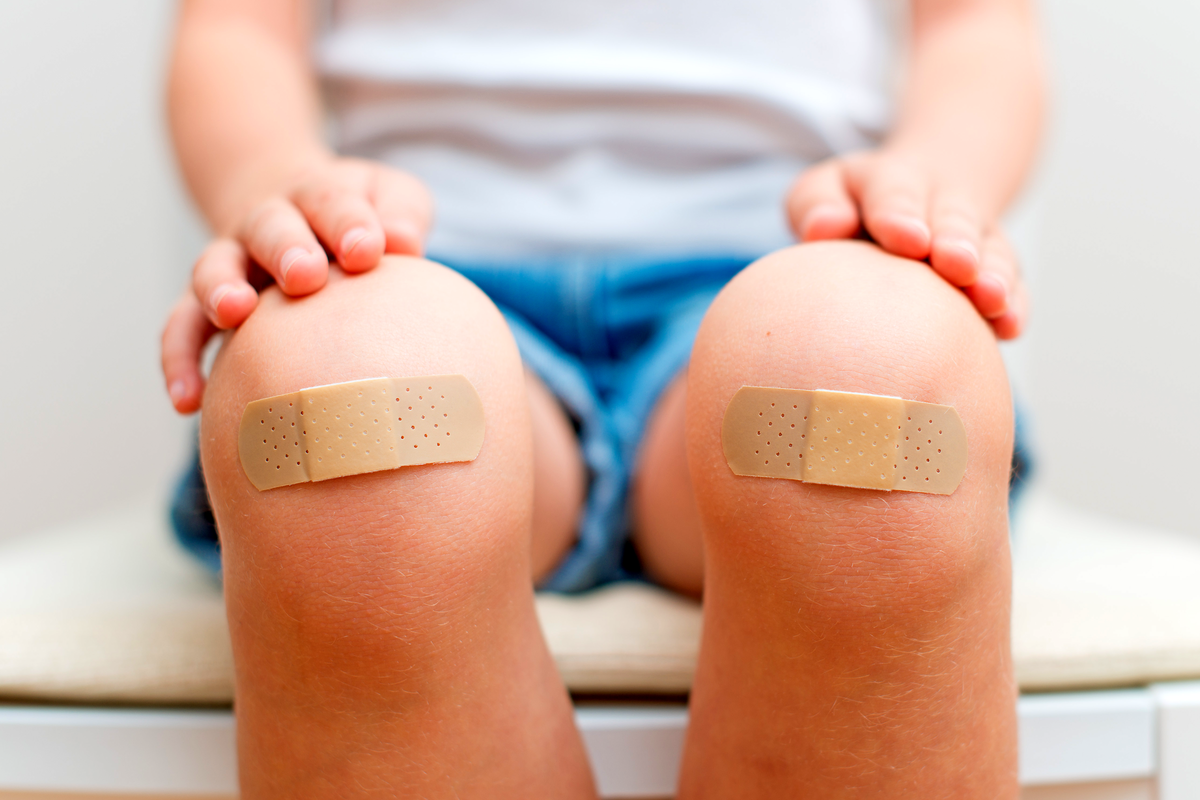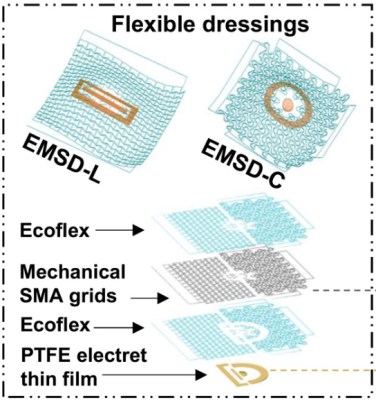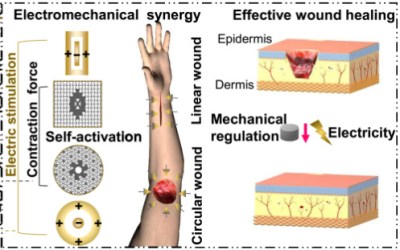#woundmanagement
Healing Wounds With The Power of Electricity


Once upon a time, even a simple cut or scrape could be a death sentence. Before germ theory and today's scientific understanding of medicine, infections ran rampant and took many lives.
While we're now well-armed with disinfectants, dressings, and antibiotics, scientists are continuing to investigate new and unique methods to improve the treatment of wounds. As it turns out, a little electricity might actually help wounds heal faster.
Zap!
 The bandages come in two designs for treating circular or linear wounds. Credit: Research paper
The bandages come in two designs for treating circular or linear wounds. Credit: Research paper
Past research has found that the application of electric current may actually assist in the wound healing process. In a paper published in 2003, researchers found that wound healing was sped up by anywhere from 13-50% by the application of an electrical field to the area. A variety of trials have found success in this area, using a variety of different methods of electrical stimulation, along with different polarities and field strengths in the vicinity of the wound.
The causative factor seems to center around the response of human keratinocytes to electrical stimulation. These skin cells may have their migration guided or directed by the electric field, in concert with the presence of certain growth factors in the area.
Thus far, most studies have required the use of expensive research equipment to apply the electric field to wound areas. Recent research from the University of Electronic Science and Technology of China has aimed to take the principle and use it in a more practical fashion.
The research has involved the creation of electrically-active wound dressings that could be applied with similar ease to typical adhesive bandages. Speaking to _New Scientist, _lead researcher Guang Yao notes that "Non-invasive, efficient, cost-effective and convenient approaches are always desired for treating skin wounds."
 The new dressings apply an electrostatic field to the wound site, with the negative electrode directly over the wound, and a positive electrode surrounding the area. The shape memory alloy layer also helps squeeze the wound closed. Credit: Research paper
The new dressings apply an electrostatic field to the wound site, with the negative electrode directly over the wound, and a positive electrode surrounding the area. The shape memory alloy layer also helps squeeze the wound closed. Credit: Research paper
As designed by the research team, the dressing consists of four layers. The first layer consists of an electrically-charged polytetrafluoroethylene plastic, which can generate an electrostatic field when placed into contact with the skin. The second layer is a flexible silicone rubber, while the third layer features a shape memory alloy. This layer helps push the wound closed to further aid the healing process, and is triggered into action by skin temperature. A final layer of flexible gel sits on top.
Notably, the electromechanical synergistic dressings, as they are known, were made in two versions. An EMSD-L, for linear wounds, features a rectangular negative electrode and a rectangular ring positive electrode around the outside. Meanwhile, the EMSD-C, for circular wounds, features a circular negative electrode and corresponding circular ring positive electrode on the outside.
The dressings were applied to 50 rats in testing. Each was given either a linear wound of 10 mm long, or a circular wound of 8 mm diameter. For control purposes, some rats were given the new dressings, while others were given conventional dressings or no dressing whatsoever. The electric dressings performed the best, with circular wounds 96.8% closed after eight days. This compares to around 75% closed for the standard dressings, and just 45.9% for those rats with undressed wounds. Results from the straight wound group were similarly in favor of the new dressing design.
Yao notes that the team hopes to produce to suit a wide variety of wound types. “We are optimising the design of devices for more shaped wounds, including irregular shapes,” he says. Human trials are also on the cards down the line.
Early results are positive and it seems there really is something to it when it comes to giving wounds a little bit of a charge to help them heal faster. While you could use them on a simple papercut, their true value may be in more serious medical settings. Wound management is its own whole branch of medicine, and it can be complicated by any number of things, from bacteria to unique genetic condtions. Helping wounds close with a little bit of static electricity could make a serious difference for huge numbers of patients around the world.
#hackadaycolumns #science #adhesivebandage #bandaid #medical #medicine #wound #wounddressing #woundhealing #woundmanagement
1 Shares